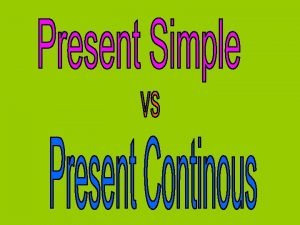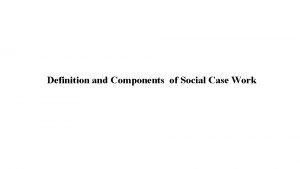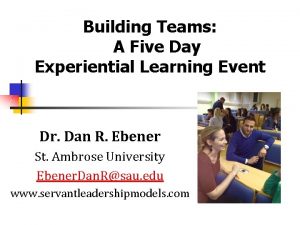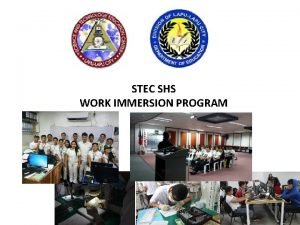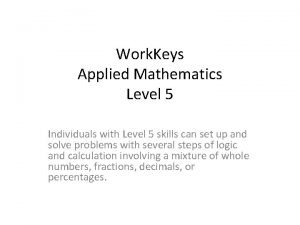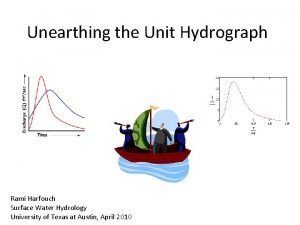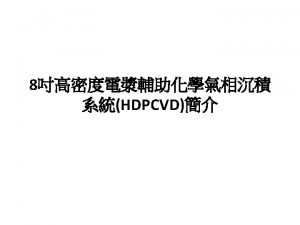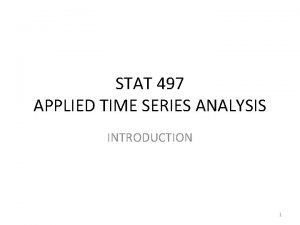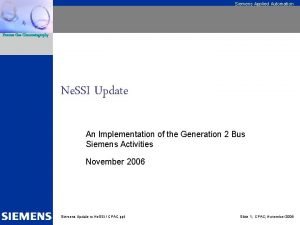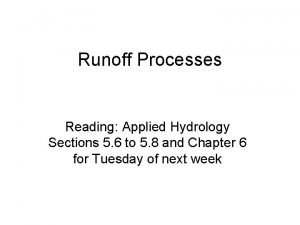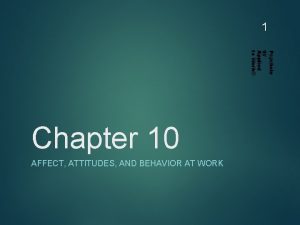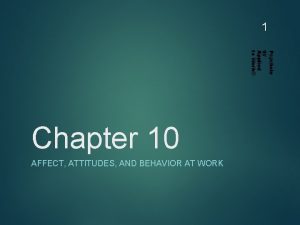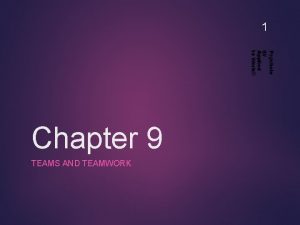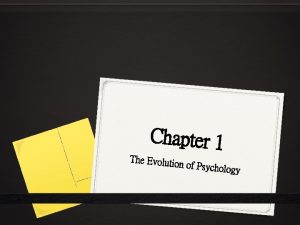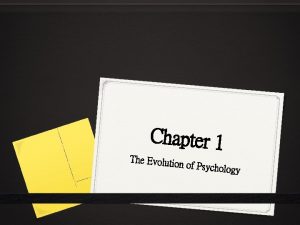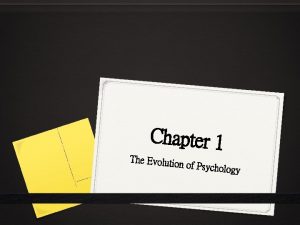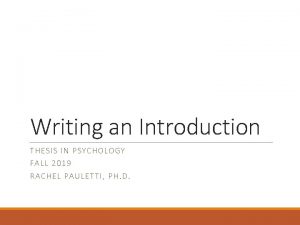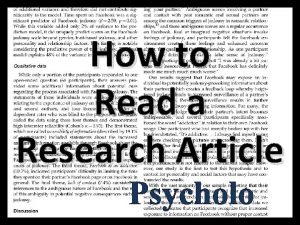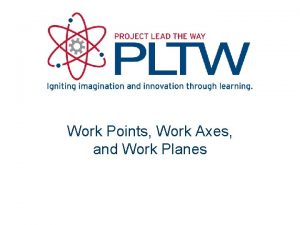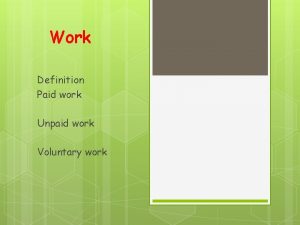1 Psycholo gy Applied to Work Chapter 3




















- Slides: 20

1 Psycholo gy Applied to Work® Chapter 3 STANDARDS FOR DECISION MAKING

Learning Objectives Understand the distinction between conceptual and actual criteria. Understand the meaning of criterion deficiency, relevance, and contamination. Explain the purpose of work analysis and the various methods of conducting one. Explain the nine major criteria of job performance examined by I/O psychologists. Understand the concept of dynamic criteria. Psychology Applied to Work® 2

Criteria Evaluative standards Criterion issues have major significance in I/O psychology Disagreements and discrepancies occur in: Choices over the proper criteria to use Disagreements about their definition Psychology Applied to Work® 3

Conceptual vs. Actual Criteria Conceptual Criterion (theoretical) Actual Criteria (empirical measures) Psychology Applied to Work® 4

Criterion Deficiency, Relevance, & 5 Contamination Criterion Deficiency Degree to which actual criteria fails to overlap conceptual criteria Can reduce but not eliminate Criterion Relevance Degree to which actual criteria and conceptual criteria coincide Psychology Applied to Work®

Criterion Deficiency, Relevance, & 6 Contamination (cont’d) Criterion Contamination Unrelated to the conceptual criteria – two parts: Bias – extent actual criteria consistently measures something else Error – extent to which actual criteria is related to nothing at all Both distort the conceptual criterion Can be controlled statistically to some degree Psychology Applied to Work®

Criterion Deficiency, Relevance, & 7 Contamination (cont’d) Psychology Applied to Work®

Work Analysis Procedure is to identify criteria in job performance by documenting: Work content Work attributes Work context Psychology Applied to Work® 8

Work Analysis Psychology Applied to Work® 9

Sources of Work Information SME (Subject Matter Expert) Job incumbent Job supervisor (Trained) Work Analyst All provide descriptive data Psychology Applied to Work® 10

Work Analytic Procedures Task-Oriented Procedures Examines Discrete work activities units of work (what is accomplished) Incumbents then rate tasks on various dimensions (e. g. , frequency, importance) Classic (FJA) example is Functional Job Analysis Rates work on three dimensions: Things, Data, and People Often used in federal government Psychology Applied to Work® 11

Work Analytic Procedures (cont’d) Worker-Oriented Procedures 12 Examines human attributes K –knowledge – types of information needed S – skills – proficiencies need that can be practiced A – abilities – relatively enduring innate proficiencies O – other – personality or capacities Linkage Analysis unites task-oriented and worker-oriented information Psychology Applied to Work®

Procedures for Collecting Information Interview (of SMEs) Direct observation (of employees) Can magnify the importance of their tasks Identifies adverse conditions; but not why behaviors occur Questionnaires/inventories (commercially available) Psychology Applied to Work® 13

Taxonomic Information (examples) Position Analysis Questionnaire (PAQ) Compares job to an existing data base of jobs Examines relationships among a set of jobs Fleishmann’s method Describes job in terms of tasks performed together with ability needed to perform them Classifies jobs based on requisite human abilities O*NET (U. S. Department of Labor) based on thousands of jobs series of instruments to assess skills and interests labor market information multiple levels of analysis and applications Psychology Applied to Work® 14

Managerial Work Analysis Managerial work is less directly observable Two instruments to analyze these jobs Professional and Managerial Position Questionnaire Personality-Related Position Requirements Form Psychology Applied to Work® 15

Uses of Work Analytic Information Offers rationale for personnel selection tests Organizes positions into job families to help determine compensation levels Provides information as to content of training needed Provides basis for content of performance appraisal Can be used in vocational counseling – career selection (O*NET) Can help with ADA criteria for reasonable accommodation Psychology Applied to Work® 16

Evaluating Work Analytic Information Some No findings: one method the best Knowledgeable raters make a big difference in rating accuracy Task-oriented methods have less error than worker-oriented (tasks are more discrete and observable) All methods involve subjective judgments Psychology Applied to Work® 17

Competency Modeling 18 Core competency is a critically important KSAO Model is array of competencies the organization desires Does NOT consider the work performed Meant to cover the entire range of employees in an organization Are abstract and don’t differentiate jobs like KSAOs Tries to link employee’s personal qualities to company mission (fit) Has little precision/rigor but has populist appeal Psychology Applied to Work®

Job Performance Criteria 1. Production 2. Sales 3. Tenure or Turnover 4. Absenteeism 5. Accidents 6. Theft 7. Counterproductive Work Behavior 8. Emotional Labor 9. Adaptive and Citizenship Behavior Psychology Applied to Work® 19

Dynamic Performance Criteria Employees have different learning curves This is a critical issue when trying to predict (short/long term) success Psychology Applied to Work® 20
 Chapter 4 work and energy section 1 work and machines
Chapter 4 work and energy section 1 work and machines Teamwork in work immersion
Teamwork in work immersion Work immersion plan sample
Work immersion plan sample Hard work vs smart work
Hard work vs smart work Present continuous tense of work
Present continuous tense of work Reciprocal model social work
Reciprocal model social work Case work definition in social work
Case work definition in social work Work group vs work team
Work group vs work team Physics 03-01 work and the work-energy theorem
Physics 03-01 work and the work-energy theorem I work all night i work all day
I work all night i work all day Smart work vs hard work group discussion
Smart work vs hard work group discussion Work immersion checklist
Work immersion checklist Workkeys applied mathematics level 5 answers
Workkeys applied mathematics level 5 answers Van hall larenstein university of applied sciences
Van hall larenstein university of applied sciences University of applied sciences vaasa
University of applied sciences vaasa Cashless jukebox
Cashless jukebox Applied hydrology
Applied hydrology Centura 5200 ultima
Centura 5200 ultima Strong stationarity
Strong stationarity Applied automation gc
Applied automation gc Scs method
Scs method




